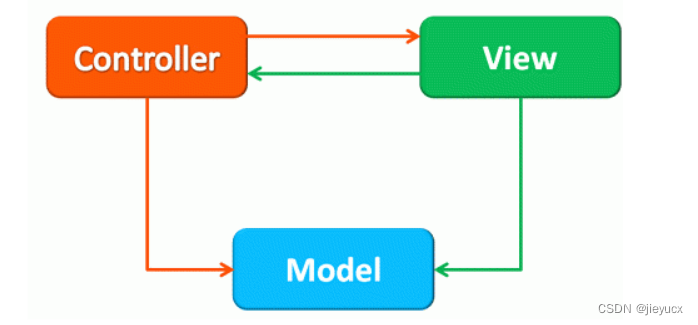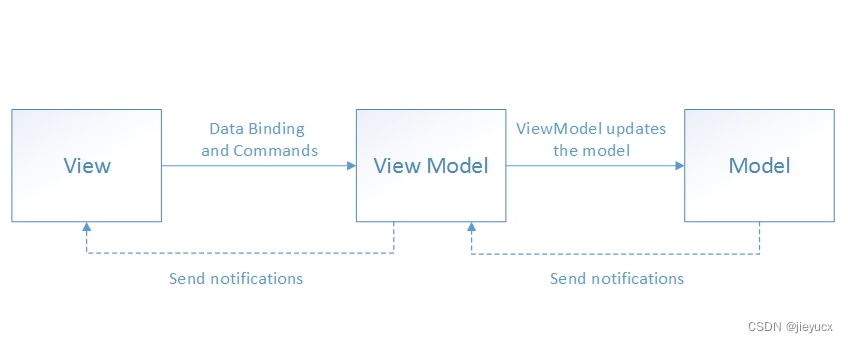MVCand MVVMare two common architectural patterns in software development, each with different advantages and disadvantages.
MVC( Model-View-Controller) is a classic architectural pattern that divides the application into three parts: model ( Model), view ( View), and controller ( Controller). The model is responsible for processing data logic, the view is responsible for displaying data, and the controller is responsible for coordinating the interaction between the model and the view. MVCThe advantages of the model are clear structure, clear division of labor, and easy maintenance and testing. However, MVCpatterns can easily lead to increased code complexity and coupling in large applications.
MVVM( Model-View-ViewModel) is a relatively new architectural pattern that uses data binding and command binding to achieve automatic synchronization of views and data. MVVMPatterns divide an application into three main parts: Model ( Model), View ( View), and ViewModel ( ViewModel). The view model is a mediator that handles the interaction between the view and the model and exposes data and commands for the view to bind to. MVVMThe advantage of the mode is that the view model has high reusability, less code, and is suitable for UIapplications with more complex logic. However, MVVMpatterns are MVCmore abstract and complex than patterns, and require learning and mastering more technologies and concepts.
1. MVC
MVCArchitecture ( Model-View-Controller) is a software design pattern used to separate different components of an application to better manage code complexity and maintainability.
MVCThe architecture consists of three main components:
- Model : Responsible for processing the data logic of the application and interacting with the database or other data sources to obtain and store data. It includes data model, data access and business logic.
- View : Responsible for displaying data, usually part of the user interface, such as a web page, graphical interface, or other forms of visual elements. Views present content based on data in the model and provide a way for users to interact with the application.
- Controller : Responsible for receiving and processing user input, and then delegating corresponding operations to models and views. It provides a bridge to the user interface and manages process control, validation, and other application logic.

The advantages of MVC architecture include:
- Separation of concerns : Make code easier to understand, maintain, and extend by separating data, display, and control logic.
- Reusability : The separation between models, views, and controllers allows them to be reused in different applications, improving code reusability.
- Parallel development : Different development teams can develop different modules at the same time to speed up development speed and efficiency.
- Testability : The MVC architecture makes unit testing easier. Models, views, and controllers can be tested separately, which improves the quality of the application.
The MVC architecture has been widely used in various types of application development, including web applications, desktop applications, and mobile applications.
2. MVVM
MVVM( Model-View-ViewModel) is an architectural pattern used to separate the user interface, business logic, and data processing logic of an application. Its design goals are to improve code maintainability, testability, and reusability.
MVVMPatterns consist of three main components:
-
Model : The model represents the data and business logic of the application, usually obtaining data through network requests or local databases.
-
View: View is the visual part of the user interface, such as graphical interfaces, pages, etc. It is responsible for displaying data and receiving user input.
-
ViewModel : The view model is the bridge between the view and the model. It takes data from the model and converts it into a format that the view can understand and use. The view model also contains properties and commands that inform the view to interact with the user.

In this mode, the view and view model communicate through data binding, and the view model forwards user actions to the model through the command mode. This separation brings several advantages:
-
Maintainability : Due to the separation between view model and model, developers can modify the view and model independently without affecting other parts of the code.
-
Testability : Because the view model does not depend on a specific view implementation, developers can write unit tests to verify its correctness without relying on specific UI components.
-
Reusability : A view model can be reused in different views by simply binding it to a different view.
In general, the MVVM pattern improves the maintainability, testability, and reusability of applications by separating views, view models, and models, making the code clearer and more structured, and providing a better development experience.
3. vue and mvvm
VueIt is a progressive framework for building user interfaces, which contains the ideas and related features of MVVM( ),Model-View-ViewModelBut it is not a complete MVVM framework in the strict sense.。The core library of vue mainly focuses on the View layer
In Vue, the model ( Model) Vueconsists of the data attributes of the instance, the view ( View) Vueconsists of the template and components of the instance, and the view ( ) consists ViewModelof Vuethe instance and Vuethe computed properties, listeners, instructions, etc. in the instance.
VueAt its core is a reactive system that achieves ViewModelfunctionality by hijacking data changes and updating views. At the same time, Vueit also provides functions such as instructions, calculated properties, and listeners to better organize and manage data interaction between views and models.